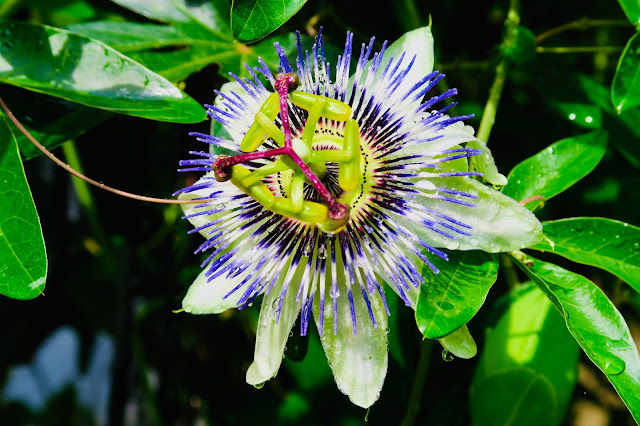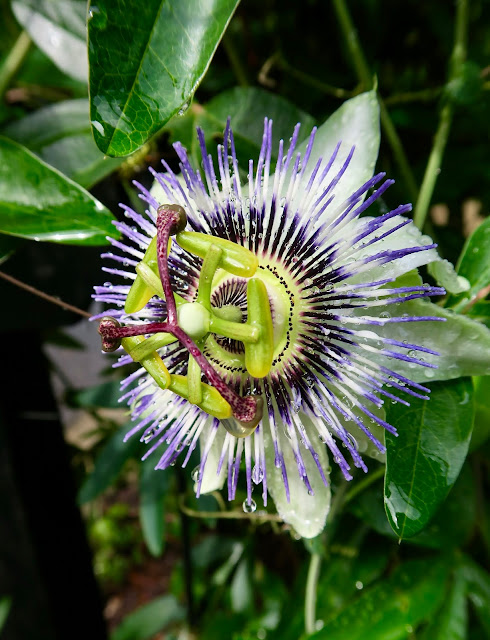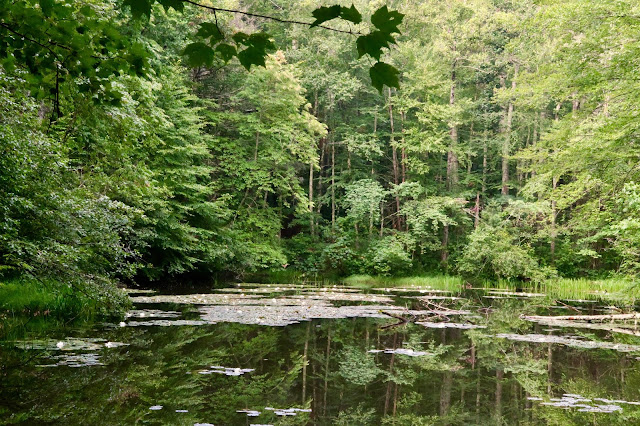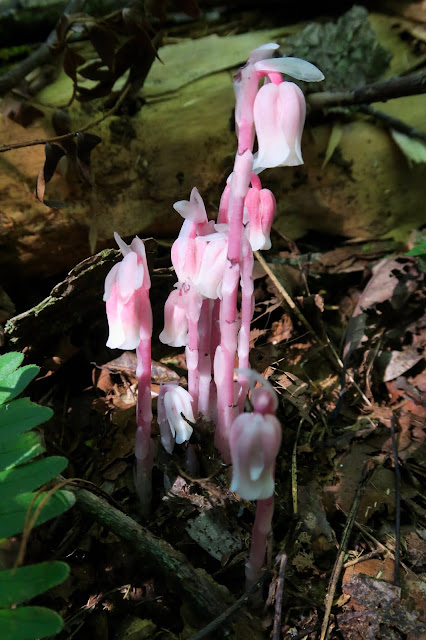
❊ ❊ ❊ ❊ ❊ ❊ ❊ ❊ ❊
Indian Pipe, Ghost Pipe, Corpse Plant
Monotropa uniflora - (Monotropa - once turned; uniflora - one flowered)
Some people consider this strange plant as Indian pipe fungus, but it is not a fungus at all. It is actually a flowering plant, and it is a member of the blueberry family(!).
Indian Pipe is a small unique wildflower, it is a translucent "ghostly"
white;
although some of them can have pink coloration and black specks.
The stem bears a single flower. After emerging from the ground, the flower is pendant (pointed down).
As the plant matures, the flower rises perpendicular to the stem.
Indian Pipe's lack chlorophyll causes
its translucent white color and this parasitic plant survives by taking
nutrients and carbohydrates from certain fungi and tree roots and decaying plant matter. Indian pipe turns dark brown to black when it is starving or has fruit.
Indian pipe is a perennial wildflower with a wide geographic
distribution throughout the United States, from Maine to California and
from Florida to Alaska. It could be found in mature, moist, shaded forests.
It flowers from early summer to early autumn roughly from June through September.
Stems can be found alone, but are commonly found in small clusters.
The plant has been used as a nervine (anxiolytic) in western herbal medicine
since the late nineteenth century.





❊ ❊ ❊ ❊ ❊ ❊ ❊ ❊ ❊
Pinesap, Dutchman's pipe, False beech-drops, Yellow bird's nest
Monotropa hypopitys (Monotropa – once turned; hypopitys – under the pine)
The name of the plant is derived from the location where the plant is usually found - under pines.
The entire plant is a pale creamy white, coral pink or red. Early blooming Pinesap is cream-colored to yellow, while fall-blooming plants can be pink to red. The Pinesap flowers from early summer to mid autumn. It is found in mature, moist, shaded, temperate forests.
For most of its life, Pinesap lives underground as a collection of specialized roots.
Early summer the plants with enough stored energy will shown up and it looks like a stem covered in flowers - but it is not a true stem. Instead, it has an inflorescence called a raceme.
At the tip of the Pinesap stalk there is a raceme 2 to 11 flowers.
Pinesap smells like spicy honey and the bees could be seen around these flowers
though it is thought that the plant mainly self pollinated.
Pinesap (Monotropa hypopithys) and Indian Pipe (Monotropa uniflora)
are two organisms which are related.
The less common is Pinesap and is not easy to find. Both species are parasitic, they grow without chlorophyll and can live in low light. These
plants get its nutrients by growing parasitically on fungi growing in
the soil.



















































